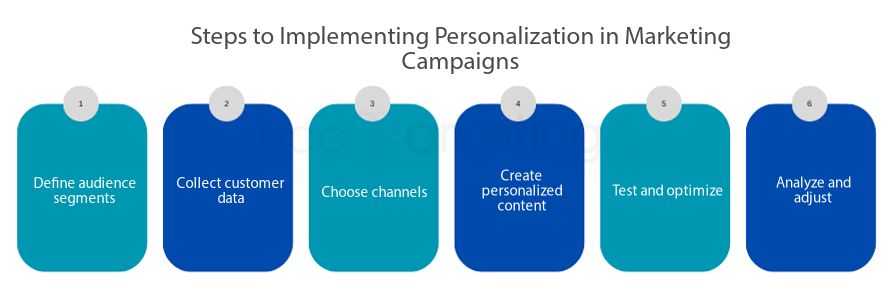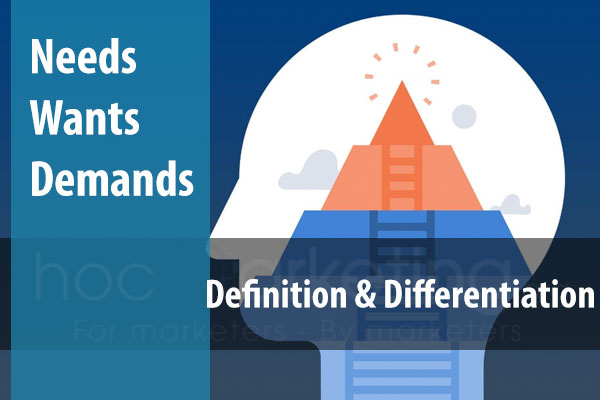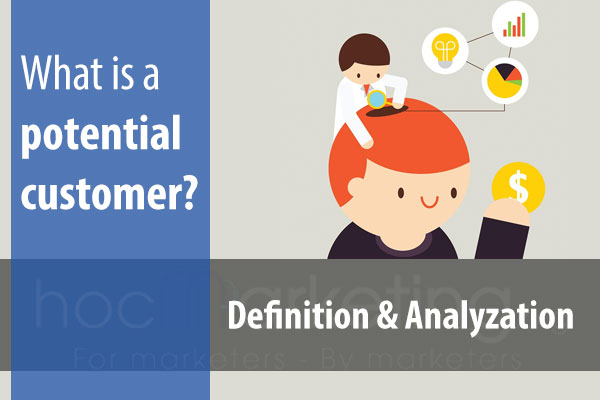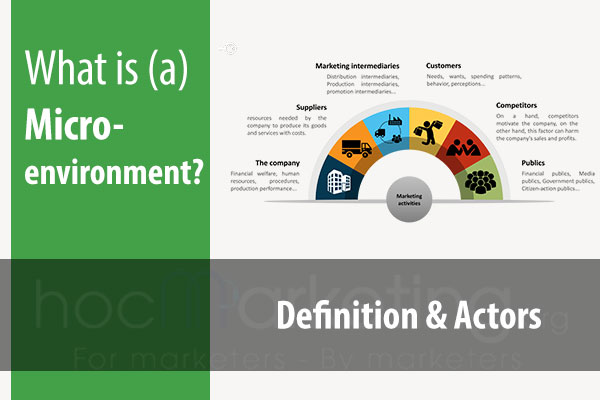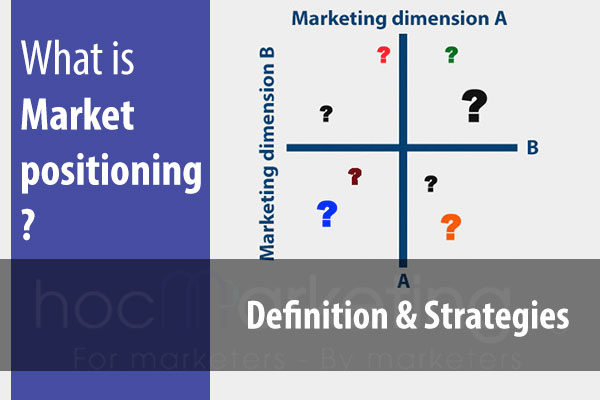
What is Personalization? Applying Personalization in Marketing Campaigns

Learn how to apply personalization in your marketing campaigns with this comprehensive guide. Discover the benefits, strategies, steps, and best practices to increase customer reach, interaction, and effectiveness. Overcome challenges and optimize your approach to drive better results.
Personalization has become a buzzword in the marketing industry, but what does it really mean? In simple terms, personalization refers to tailoring your marketing efforts to meet the unique needs and preferences of individual customers. By doing so, you can create a more meaningful and engaging experience for your audience, ultimately leading to increased customer loyalty, higher conversion rates, and more revenue for your business. In this blog post, we'll explore the benefits of personalization in marketing campaigns, the different types of personalization, data collection strategies, and steps to implementing personalization in your own marketing efforts. We'll also discuss some of the challenges you may face along the way and share best practices for achieving success with personalization. So, let's dive in and discover how you can apply personalization in your own marketing campaigns.
What is Personalization?
Personalization is a marketing strategy that aims to create tailored experiences for individual customers based on their unique characteristics, behaviors, and preferences. By leveraging data, technology, and creative content, companies can deliver personalized messages, offers, and recommendations across various channels such as email, social media, website, or mobile app. Personalization enables companies to increase customer engagement, loyalty, and revenue by providing relevant and timely information that meets customers' needs and expectations. In this article, we will explore the benefits, types, strategies, steps, challenges, and best practices of personalization in marketing campaigns.
Benefits of Personalization in Marketing Campaigns
Personalization in marketing campaigns has become increasingly popular in recent years, as companies strive to make their messages more relevant and engaging for consumers. There are several benefits to incorporating personalization into your marketing campaigns. Firstly, personalization can help to increase customer reach by tailoring messages to individual needs and preferences. This can lead to higher engagement rates and increased brand loyalty over time. Secondly, personalization can make marketing campaigns more friendly and approachable, creating a more positive customer experience overall. Finally, personalization can improve the overall effectiveness of marketing campaigns by delivering more targeted and relevant messages to the right audience. Overall, incorporating personalization into your marketing campaigns can help to drive better results and improve overall customer satisfaction.
Increase customer reach
Personalization is an effective marketing strategy that allows businesses to tailor their content and messaging to specific customers. By doing so, businesses can increase their customer reach and connect with their target audience on a more personal level. Personalization can be achieved through a variety of tactics, including personalized product recommendations, customized email campaigns, and targeted social media advertising. Through these tactics, businesses can create a more engaging and relevant customer experience, which can lead to increased brand loyalty and sales. In the following sections, we will explore the various benefits and strategies of personalization, as well as the challenges that businesses may face when implementing this approach.
Increase customer interaction and friendliness
Personalization not only increases customer reach, but it also enhances customer interaction and friendliness. By providing personalized content and messaging, companies can create a more intimate connection with their customers, making them feel valued and understood. This, in turn, leads to increased engagement and loyalty. Personalization can also encourage customers to share their experiences with others, further expanding the reach of a company's marketing campaign. However, it is important to strike a balance between personalization and privacy concerns, as customers may feel uncomfortable or violated if their personal information is used without their consent. By implementing best practices and respecting customers' boundaries, companies can create a positive and effective personalization strategy.
Increase effectiveness of marketing campaigns
Personalization in marketing campaigns has been found to significantly increase the effectiveness of marketing efforts. By tailoring the message and offerings to the specific needs and interests of each customer, companies can increase engagement, conversions, and customer loyalty. This is because personalized campaigns are more relevant and compelling to the recipient, leading to higher open and click-through rates, increased website traffic, and ultimately, higher sales. In fact, according to a study by Epsilon, personalized emails have an average open rate of 29%, compared to 18% for non-personalized emails.
Moreover, personalization can help to improve the customer experience by providing a more seamless and enjoyable interaction with the brand. By showing that the company understands the customer's preferences and needs, it can create a sense of trust and loyalty, which can lead to repeat business and positive word-of-mouth referrals. This is particularly important in today's competitive market, where customers have high expectations for personalized experiences across all channels.
Overall, the benefits of personalization are clear, making it a valuable strategy for companies looking to improve the effectiveness of their marketing campaigns. By taking the time to collect and analyze customer data, and using this information to tailor the message and offerings to each customer, companies can create more engaging and effective campaigns that drive results.
Types of Personalization
Personalization can be achieved in various ways, depending on the type of data and information available about the customer. One type of personalization is product recommendations, where a customer is shown products based on their previous purchases or browsing history. Another type is personalized email campaigns, where the content and messaging are tailored to the individual's interests and behavior. Personalized landing pages on a website can also be created, where the page content and design are customized based on the customer's profile and preferences. In addition, personalized ads can be targeted to specific audiences based on their demographic, geographic, or psychographic characteristics. These are just a few examples of the types of personalization that can be used in marketing campaigns to enhance the customer experience and drive engagement.
Data Collection for Personalization
Personalization relies heavily on data collection. Without the right data, it's impossible to personalize your marketing campaigns. Data collection for personalization involves gathering and analyzing data about your customers, including their demographics, interests, behavior, and preferences. This information can be collected from a variety of sources, including website analytics, social media interactions, email marketing campaigns, customer surveys, and purchase history.
One of the most important aspects of data collection for personalization is ensuring that the data is accurate and up-to-date. This requires a robust data management system, which can help you collect, store, and analyze customer data in real time. Some of the key data points that you might collect for personalization include customer name, location, age, gender, interests, purchase history, and behavior on your website or social media channels.
In addition to collecting data, it's important to segment your customers based on their interests and behavior. This allows you to create personalized messages and offers that are tailored to each segment. For example, if you're a fashion retailer, you might segment your customers based on their preferred style, color, or brand. This allows you to create targeted marketing campaigns that are more likely to resonate with each segment.
Overall, data collection is a critical component of personalization in marketing campaigns. By collecting and analyzing customer data, you can gain valuable insights into their behavior and preferences, which can help you create more effective and targeted marketing campaigns. However, it's important to ensure that you have a robust data management system in place to ensure that your data is accurate, up-to-date, and secure.
Personalization Strategies
To effectively implement personalization in marketing campaigns, there are certain strategies that businesses can adopt to ensure that their efforts are well-targeted and yield positive results. One of the first strategies is to ensure that the customer data being collected is accurate and up-to-date. This data can be used to create customer profiles that can help businesses understand their customers’ preferences, behaviors, and needs.
Another strategy is to use dynamic content that changes depending on the customer’s behavior or actions. This can be achieved through the use of website personalization tools that can help businesses deliver customized experiences to their customers. For instance, personalized product recommendations can be displayed based on the customer’s browsing history or purchase history.
Segmentation is another important strategy that can be used to personalize marketing campaigns. By dividing customers into different groups based on their demographics, interests, or purchase history, businesses can create targeted campaigns that are tailored to each segment. This can lead to higher customer engagement and conversions.
Personalized messaging is also a key strategy that can be used to increase the effectiveness of marketing campaigns. By using customer data to create personalized emails, social media messages, or ads, businesses can deliver messaging that resonates with the customer and encourages them to take action.
Finally, businesses should continuously analyze and optimize their personalization strategies to ensure that they are delivering the desired results. This can be achieved through A/B testing, customer feedback, and data analysis. By constantly refining their personalization tactics, businesses can ensure that they are staying relevant and competitive in today’s crowded marketplace.
Steps to Implementing Personalization in Marketing Campaigns
Personalization is a powerful tool that can help businesses to build stronger relationships with their customers and drive more sales. However, implementing personalization in marketing campaigns can be a daunting task. In this section, we will discuss the steps that businesses need to take in order to implement personalization in their marketing campaigns successfully.
The first step is to define your audience segments. It is essential to understand who your customers are and what their needs and preferences are. You can do this by analyzing data from various sources, such as website analytics and customer surveys. This will help you to create audience segments based on demographics, behavior, and preferences.
The second step is to collect data on your customers. This includes data such as their browsing behavior, purchase history, and social media activity. You can use this data to create personalized content and messaging that resonates with your customers.
The third step is to choose the channels for personalization. This includes email marketing, social media, mobile apps, and website personalization. You should choose the channels that your customers use the most and create personalized experiences for them on those channels.
The fourth step is to create personalized content and messaging. This includes creating personalized product recommendations, targeted promotions, and personalized emails. You should use the data you have collected to create content that is relevant and engaging to your customers.
The fifth step is to test and optimize your personalization tactics. This includes A/B testing of different content and messaging to see what works best. You should also track the effectiveness of your personalization tactics and adjust them as needed.
The sixth and final step is to continuously analyze and adjust your approach. Personalization is an ongoing process, and you should constantly monitor your data and adjust your tactics to reflect changes in customer behavior and preferences.
By following these steps, businesses can successfully implement personalization in their marketing campaigns and deliver personalized experiences that drive more sales and build stronger customer relationships.
Step 1: Define your audience segments
Defining audience segments is the first step in implementing personalization in marketing campaigns. This involves breaking down your target audience into smaller groups with similar characteristics, interests, and behaviors. By doing so, you can create personalized content and messaging that resonates with each segment and increases the chances of conversion.
To define your audience segments, you need to start with market research and customer data analysis. This can involve collecting demographic information such as age, gender, location, income, education, and occupation. You can also gather psychographic data such as values, beliefs, attitudes, interests, and lifestyles. Social media analytics, website analytics, and customer feedback surveys are some of the tools you can use to collect this data.
Once you have collected the data, you can start segmenting your audience based on commonalities. For example, you may segment your audience based on their purchase history, browsing behavior, or engagement with your brand. You can also segment them based on their needs, preferences, or pain points.
The key is to identify segments that are relevant to your brand and marketing goals. You don't want to create too many segments that it becomes difficult to personalize your marketing campaigns. At the same time, you don't want to create too few segments that you miss out on opportunities to connect with your audience.
In the next sub-sections, we will discuss different types of personalization and how you can use data to personalize your marketing campaigns for each segment.
Step 2: Collect data on your customers
To implement personalization in your marketing campaigns, the second step is to collect data on your customers. This involves gathering information about their preferences, behavior, demographics, and other relevant data points. The more data you collect, the better you can understand your customers and tailor your marketing efforts to their needs and interests.
There are various ways to collect data on your customers, including surveys, polls, social media monitoring, website analytics, and customer feedback. You can also use customer relationship management (CRM) software to track customer interactions and transactions, which can provide valuable insights into their behavior and preferences.
When collecting data, it's important to ensure that you're using ethical and legal methods and that you're transparent about your data collection practices. Customers should be informed about what data you're collecting, how you're using it, and how they can control their data.
Overall, collecting data on your customers is a crucial step in implementing personalization in your marketing campaigns. By understanding your customers' needs and preferences, you can create more targeted and effective marketing messages that resonate with them and drive engagement and conversions.
Step 3: Choose the channels for personalization
After defining your audience segments and collecting data on your customers, the next step in implementing personalization in your marketing campaigns is to choose the channels through which you will personalize your messaging and content. The channels you choose will depend on your audience and the data you have collected on them.
One channel for personalization is email marketing. By segmenting your email list based on customer behavior and interests, you can personalize the content and messaging of your emails to increase engagement and conversions. Another channel is website personalization, where you can create personalized landing pages and content based on customer behavior and preferences.
Social media is also a popular channel for personalization, as you can target specific audiences with personalized messaging and content through social media advertising. Mobile apps and push notifications are another channel for personalization, as you can use customer data to send personalized messages and offers to customers on their mobile devices.
Ultimately, the channels you choose for personalization will depend on your audience and the data you have on them. It's important to choose channels where your audience is most active and engaged, and where you can deliver personalized messaging and content that resonates with them.
Step 4: Create personalized content and messaging
To create personalized content and messaging, you need to use all the information you have gathered about your customers to tailor your marketing messages to their specific needs and preferences. This means going beyond just using customers' names in your communications and instead using data to segment your audience and create targeted messages that are more likely to resonate with each group.
One effective way to do this is to use dynamic content, which allows you to create multiple versions of the same email or landing page that are tailored to different audience segments. For example, you could create different versions of an email that highlight different product features or benefits based on what you know about each recipient's interests.
Another important aspect of personalized messaging is tone and voice. Depending on your audience, you may want to adjust the language and tone of your messages to better match their preferences. For example, if you are targeting a younger audience, you may want to use more casual language and humor in your messaging, whereas if you are targeting a more professional audience, you may want to use a more formal tone.
Overall, the key to creating effective personalized content and messaging is to use data to understand your audience and tailor your messages accordingly. By doing so, you can create more engaging and relevant marketing campaigns that are more likely to drive conversions and build long-term customer relationships.
Step 5: Test and optimize your personalization tactics
After creating personalized content and messaging, the next step is to test and optimize your personalization tactics. This step is crucial because it helps you understand what works and what doesn't, and allows you to make adjustments accordingly. Testing and optimization is an ongoing process that requires continuous analysis and adjustment. Here are some best practices for testing and optimizing your personalization tactics.
First, define your Key Performance Indicators (KPIs) and metrics for success. This will help you measure the effectiveness of your personalization tactics and determine what needs to be improved. Some common KPIs for personalization include click-through rates, conversion rates, and engagement rates.
Next, conduct A/B testing to compare different versions of your personalized content and messaging. A/B testing involves creating two versions of a marketing campaign or piece of content and testing them against each other to see which version performs better. This can help you determine the most effective personalization tactics for your audience.
Another best practice is to use data analytics to monitor the performance of your personalized campaigns. This involves tracking customer behavior and engagement with your content to gain insights into what works and what doesn't. By analyzing data, you can identify trends and patterns that can inform your personalization strategy.
Finally, be open to making adjustments and changes based on your testing and analysis. Personalization is not a one-time effort, but an ongoing process that requires continuous improvement. Use the insights gained from your testing and analysis to refine and optimize your personalization tactics over time.
Overall, testing and optimization is a critical step in applying personalization to your marketing campaigns. By measuring the effectiveness of your personalization tactics and making adjustments based on data and insights, you can improve customer engagement, increase conversions, and achieve better results from your marketing efforts.
Step 6: Continuously analyze and adjust your approach.
To ensure the success of your personalized marketing campaigns, it is crucial to continuously analyze and adjust your approach. This step involves monitoring the performance of your campaigns and making necessary adjustments to improve their effectiveness. One way to do this is by tracking your key performance indicators (KPIs) such as click-through rates, conversion rates, and customer engagement rates. By keeping track of these metrics, you can measure the impact of your personalization tactics and determine which ones are most effective.
Another important aspect of continuous analysis and adjustment is customer feedback. It is essential to listen to your customers and understand their preferences, needs, and expectations. This feedback can help you identify areas of improvement and make necessary adjustments to your personalization strategies. For example, if customers are not responding well to a particular personalized message, you may need to adjust your messaging or delivery approach.
In addition, it is important to stay up-to-date with the latest trends and technologies in personalization. As new technologies emerge, you may need to adjust your approach to remain competitive and relevant. For example, you may need to incorporate artificial intelligence (AI) and machine learning (ML) into your personalization strategies to provide more accurate and relevant personalized experiences for your customers.
Overall, continuous analysis and adjustment are critical to the success of your personalized marketing campaigns. By monitoring your performance metrics, listening to your customers, and staying up-to-date with the latest trends and technologies, you can optimize your personalization strategies and deliver more effective and engaging experiences for your customers.
Challenges of Personalization
Personalization is not without its challenges. One of the biggest challenges is collecting and managing the data needed for personalization. It requires a significant investment in technology, data analytics, and talent to make it work effectively. In addition, customer data privacy concerns are increasing, and marketers need to be transparent about how they collect and use customer data.
Another challenge is maintaining the balance between personalization and privacy. While personalized marketing can be effective, it can also be intrusive and cross the boundary of customer privacy. Marketers need to be cautious about how much data they collect and how they use it.
Furthermore, personalization requires a deep understanding of customer behavior and preferences. This means that marketers need to be constantly gathering and analyzing customer data to ensure that they are delivering the right message to the right customer at the right time.
Personalization can also create a siloed approach to marketing, where different channels and departments have their own personalization strategies, leading to inconsistent messaging and customer experiences. To overcome this challenge, marketers need to ensure that their personalization strategies are aligned across all channels and departments.
Finally, personalization requires a shift in mindset and approach to marketing. Marketers need to move away from mass marketing tactics and embrace a customer-centric approach. This requires a significant investment in time and resources to develop the necessary skills and expertise.
Despite these challenges, personalization can be a powerful tool for marketers to increase customer engagement and drive revenue. By understanding the challenges and implementing best practices, marketers can ensure that their personalization strategies are effective and customer-focused.
Best Practices for Personalization in Marketing Campaigns
To ensure the success of personalization in marketing campaigns, it is important to follow some best practices. Firstly, it is crucial to establish a strong data management system to collect, store, and analyze customer data. This will enable businesses to gain insights into customer behavior and preferences, which can then be used to tailor marketing messages and offers. Secondly, it is important to be transparent about data collection and use. Customers are more likely to engage with businesses that are open and honest about how their data is being used.
Thirdly, it is important to start small and gradually scale personalization efforts. This can involve testing different personalization tactics on a small group of customers before rolling them out to a wider audience. Fourthly, it is important to use personalization to enhance the customer experience, rather than just for the sake of it. This means focusing on providing relevant and timely offers and messages that meet the customer's needs.
Fifthly, it is important to use a multi-channel approach to personalization, including email, social media, website, and mobile. This will ensure that customers are reached through their preferred channels and will increase the chances of engagement. Sixthly, it is important to continuously analyze and optimize personalization tactics to ensure they are effective and relevant. This involves monitoring customer responses and adjusting personalization strategies accordingly.
Finally, it is important to strike a balance between personalization and privacy. While personalization can enhance the customer experience, it is important to respect customer privacy and ensure that personalization efforts do not cross any ethical or legal boundaries. By following these best practices, businesses can implement effective and ethical personalization strategies that improve customer engagement and drive business growth.
Summary
In conclusion, personalization is a powerful tool for marketers to connect with their audience on a deeper level. By leveraging data and technology, businesses can create tailored experiences that meet the unique needs and preferences of their customers. Whether it's through email campaigns, website content, or product recommendations, personalization can help drive engagement, loyalty, and ultimately, revenue. As the marketing landscape continues to evolve, it's clear that personalization will become an increasingly important strategy for brands looking to stand out in a crowded marketplace. So, embrace personalization and start delivering customized experiences that delight and engage your audience today!

